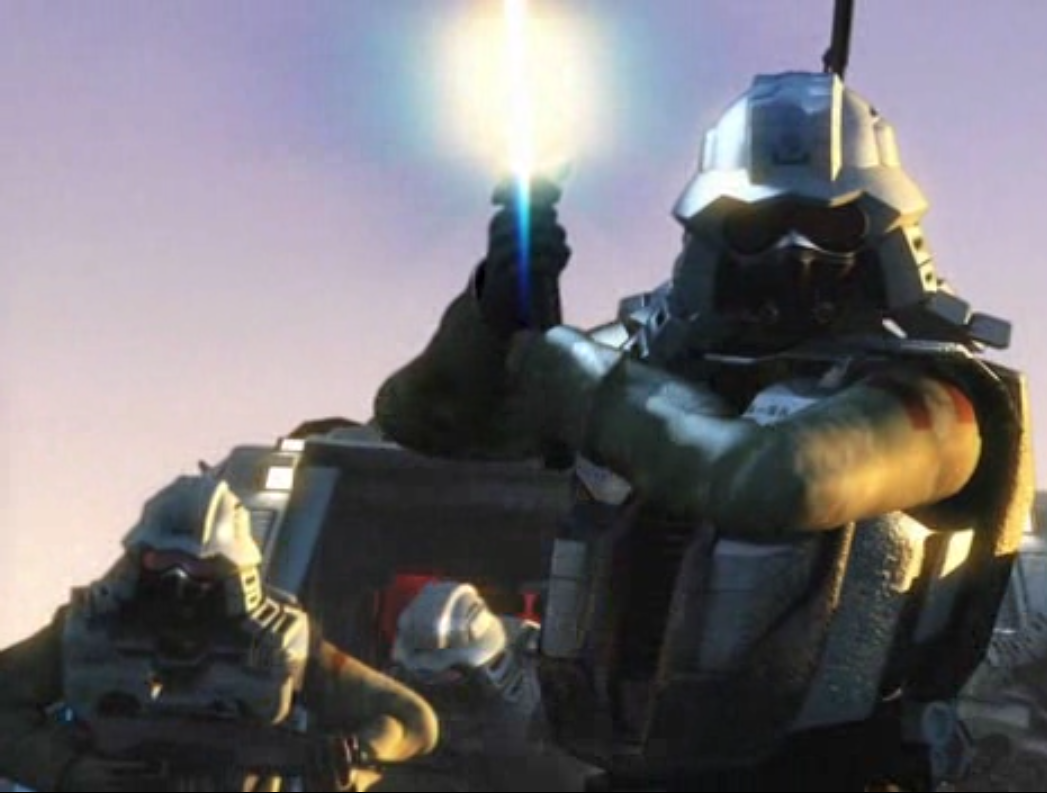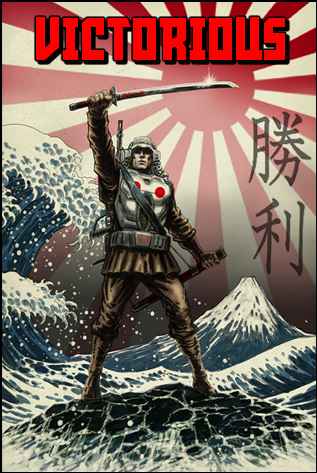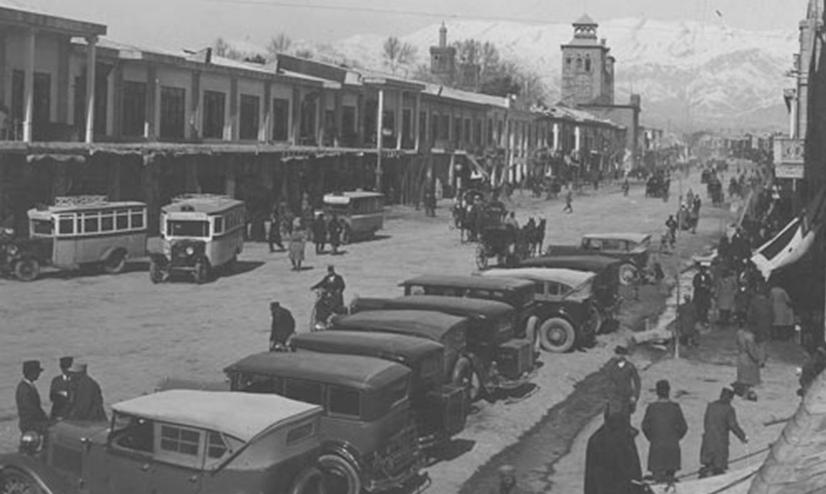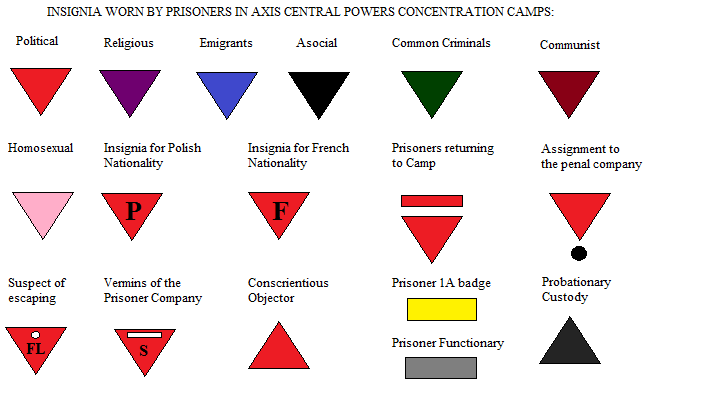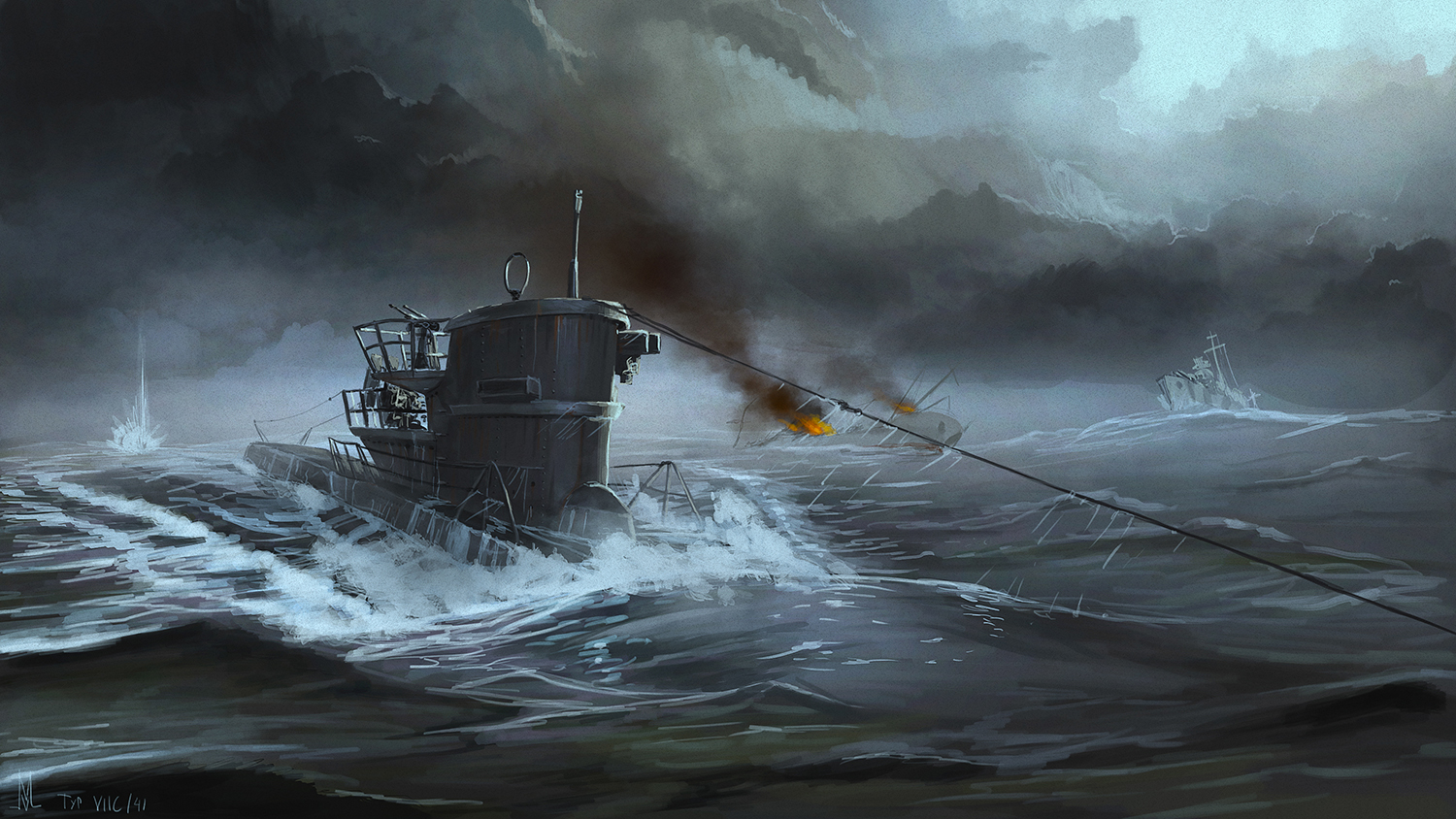Chapter 313: Coprospism: Vietnamese Bảo Đạiism

The Coprospism in Vietnam was a Imperial and National form of Coprospism in Vietnam, that tried to lead their new Empire into a prosperous future. It was known as Bảo Đạiim or simply just Đạiism. Under Emperor Bảo Đại the young, once again independent state tried it' best to make Vietnam a independent and strong regional power inside the Co-Prosperity Sphere. With the authority of Bảo Đại the state focused on the Vietnamese, but also used the ethnic minorities for labor and military service if it strengthened the nation. His administration was helped by Imperial Fascist French Collaborators and other former french colonial governors of Indochina (the later forced). In one of his first government actions Bảo Đại declared the Treaty of Hué (1884) made with France void and chose Tran Trong Kim, a renowned historian an scholar to lead the government as prime minister. Bảo Đại before the Emperor of Annam only, spend a great amount of his time on constitutional matters at the first meeting of his government in Hue, where they also decided the national name to be Việt Nam a another urgent task. This implied territorial unity; "Việt Nam" had been Emperor Gia Long's choice for the name of the country since he unified the modern territory of Việt Nam in 1802. Furthermore, this was the first time that Vietnamese nationalists in the northern, central and southern regions of the country officially recognized this name. Kim also helped rename the three regions of the country, the northern (former Tonkin or Bắc Kỳ) became Bắc Bộ, the central region (former Annam or Trung Kỳ) became Trung Bộ, and the southern areas (former Cochinchina or Nam Kỳ) became Nam Bộ. The pre-colonial name for Hue, Thuan Hoa was restored in the process and Kim's officials worked to find a French substitute for the word "Annamite", which was used to denote Vietnamese people and their characteristics as described in French literature and official use. "Annamite" was considered derogatory, and it was replaced with "Vietnamien" (Vietnamese). These terms have been internationally accepted since then, as Kim ordered the changes. Given that the French colonial authorities emphatically distinguished the three regions of "Tonkin", "Annam", and "Cochinchina" as separate entities, implying a lack of national culture or political integration, Kim's first acts were seen as symbolic and the end of generations of frustration among Vietnamese intelligentsia and revolutionaries. Kim also helped Bảo Đại selected a new national lag, a yellow, rectangular banner with three horizontal red stripes modeled after the Li Kwai in the Book of Changes and a new national anthem, the old hymn Dang Dan Cung (The King Mounts His Throne).
Internally Bảo Đại and Kim tried to reform and modernize their new state. Kim's government strongly emphasized educational reform, focusing on the development of technical training, particularly the use of japanized script as the primary language of instruction. After less than two months in power, Kim organized the first primary examinations in Vietnamese, the language he intended to use in the advanced tests. Education minister Hoang Xuan Han strove to Vietnamise public secondary education. His reforms took more than four months to achieve their results, and have been regarded as a stepping stone for the later compulsory mass education. In July, when the Japanese decided to grant Vietnam full independence and territorial unification, Kim's government was about to begin a new round of reform, by naming a committee to create a new national education system. The Justice minister Trinh Dinh Tháo launched an attempt at judicial reform. He created the Committee for the Reform and Unification of Laws in Huế, which he headed. His ministry reevaluated the sentences of political prisoners, releasing a number of anti-French activists and restoring the civil rights of others. This led to the release of a number of Communist cadres who returned to their former cells, and actively participated in the destruction of Kim's government a rebels.One of the most notable changes implemented by Kim's government was the encouragement of mass political participation. In memorial ceremonies, Kim honored all national heroes, ranging from the legendary national founders, the Hung kings to slain anti-French revolutionaries such as Nguyen Thai Hoc, the leader of the Vietnamese Nationalist Party (Viet Nam Quo Dan Dang) who was executed with twelve comrades in 1930 in the aftermath of the Yen Bái mutiny. A committee was organized to select a list of national heroes for induction into the Temple of Martyrs (Nghia Liet Tu). City streets were renamed. In Huế, Jules Ferry was replaced on the signboards of a main thoroughfare by Le Loi, the founder of the Le Dynasty who expelled the Chinese in 1427. General Tran Hung Dao, who twice repelled Mongol invasions in the 13th century, replaced Paul Bert. On August 1, the new mayor of Hanoi, Tran Van Lai, ordered the demolition of French built statues in the city parks in his campaign to Wipe Out Humiliating Remnants. Similar campaigns were enacted in southern Vietnam in late August. Meanwhile, the freedom of the press was instituted, resulting in the publication of the pieces of anti-French movements and critical essays on French collaborators. Heavy criticism was even extended to Nguyen Huu Do, the great grandfather of Bảo Đại who was notable in assisting the French conquest of Dai Nam in the 1880s.
Kim put particular emphasis on the mobilization of youth. Youth Minister Phan Anh, attempted to centralist and heavily regulate all youth organizations, which had proliferated immediately after the Japanese coup. On May 25, an imperial order decreed an inclusive, hierarchical structure for youth organizations. At the apex was the National Youth Council, a consultative body, which advised the minister. Similar councils were to be organized down to the district level. Meanwhile, young people were asked to join the local squads or groups, from provincial to communal levels. They were given physical training and were charged with maintaining security in their communes. Each provincial town had a training center, where month-long paramilitary courses were on offer. The government also established a national center for the Advanced Front Youth (Thanh nien tien tuyen) in Huế. It was inaugurated, with the intention of being the centerpiece for future officer training. A months later, regional social youth centers were established in Hanoi, Huế, and Saigon. In Hanoi, the General Association of Students and Youth (Tong Hoi Sinh vien va Thanh Nien) was animated by the fervor of independence. The City University in Hanoi became a focal point of political agitation. Two months later, there was evidence that communist Cadres of the Viet Minh front, had infiltrated the university's youth and famine relief associations. In the face of the rising Viet Minh front, the Japanese attempted to contact its leaders, but their messengers were killed by the Viet Minh. The Kempeitai retaliated, arresting hundreds of pro-communist Vietnamese youths later that months and helped build up a Vietnamese intelligence agency, a police and a army to deal with this commuist rebels.
One of the most notable achievement of Kim's young Empire of Vietnam was the successful negotiation with Japan for the territorial unification of the nation. The French had subdivided Vietnam into three separate regions: Cochinchina (in 1862), Annam and Tonkin (both in 1884). After the formation of Kim's cabinet and the membership of the Co-Prosperity Sphere, the Empire of Japan quickly agreed to transfer what was then Annam, Tonkin and Cochinchina to Kim's authority, although the Japanese Army and the Japanese Navy retained control of the cities of Hanoi, Haiphong an Da Nang. Foreign Minister Trn Van Chuong negotiated with the Japanese in Hanoi for the transfer of the three cities to Vietnamese rule, but the Japanese said because Hanoi and Haiphong were seen as strategic points in their war effort, they had to remain their forces there. They could only be fully given to Vietnam when the Allies and French would not be able to return after accepting the Vietnamese independence in a peace deal. It was only in June and July that the Japanese allowed the process of national unification to take place. A months later Yuitsu Tuchihahi, signed a series of decrees transferring some of the duties of the government (including customs, information, youth, and sports) to the governments of Vietnam, Laos and Cambodia, effective the first day of the next months. Bảo Đại then issued imperial orders establishing four committees to work on a new regime: the National Consultative Committee (Hoi dong Tu van Quoc Gia); a committee of fifteen to work on the creation of a constitution; a committee of fifteen to examine administrative reform, legislation, and finance; and a committee for educational reform.
Soon later Kim announced the organization of the Council to facilitate his governance. This council was charged with advising the Japanese based on questions submitted to it by the Japanese and for overseeing provincial affairs. Minoda underlined that its primary aim was to make the Vietnamese population believe that they had to collaborate with the Japanese, because "if the Japanese lose the war, the independence of Indochina would not become complete." At the inauguration of the Council of Nam Bo on July 21 1942, Minoda implicitly referred to the unification of Vietnam. Tran Van An was appointed as the president of the Council, and Kha Vng Can, a leader of the Vanguard Youth, was appointed to be his deputy. On July 23, Kim arrived in Hanoi to negotiate directly with Governor-General Tsuchihashi. Tsuchihashi agreed to transfer control of the cities of Hanoi, Haiphong, and Da Nang to Kim's government, taking effect on July 20, but a strong Co-Prosperity Sphere force would remain. After protracted negotiation, Tsuchihashi agreed that Nam Bo would be united with the Empire of Vietnam and that Kim would attend the unification ceremonies on August 8 in Saigon.
After the creation of the government of the Empire of Vietnam, the Japanese began raising an army to help police the local population. The Imperial Vietnamese Army was officially established by the IJA 38th Army to maintain order in the new country. The Vietnamese Imperial Army just like the other forces of former French Indochina was under the control of Japanese lieutenant general Yuitsu Tsuchihashi, who served as adviser to the Empire of Vietnam. Kim and Emperor Bảo Đại quickly gained new followers and supporters for their reforms an modernization. Communist sympathizers like Phan Ke Toai and former secret communists (outed by their comrades after torture) like Nguyen Manh Ha or Hoang Minh Giám were arrested or even killed. Nguyen Xuan Chu, the leader of the Vietnamese Patriotic Party (Viet-Nam Ai Quoc Dang) and one of the five members of the first provincial government, Prince Cuòng De's National Reconstruction Committee, stayed absolutely loyal to the concept and ideal of the Co-Prosperity Sphere. The ministers of interior, economy, and supplies were announced despite some personal rivalries. Ho Ta Khanh, the economic minister, mad a deal with the Japanese Army to use rice from Siam/Thailand, Burma and some Chinese member states of the Co-Prosperity Sphere instead of just Vietnamese rice to prevent the starvation in Vietnam in 1945 because to much rice was taken out of the country.
Mahayana Buddhism, influenced by Confucianism became the officially state religion, other religions and sects like Caodaism were tolerater, European and Colonial viewed Christianity however (up to 10% of Tonkin's population was Catholic). Minority groups such as the Muong, Tay, Chams, or Jarai (collectively known as Montegnards/ Degar or People from the Mountain were used by the Imperial Japanese Army and the Imperial Vietnamese Army trained by them to form special Mountain Divisions as elite forces who knew their home terrain very well. Emperor Bảo Đại would remain the ruler of Vietnam, when Prince Cuòng De died of cancer in 1951 in a hospital in Tokio. Vietnamese Bảo Đạiist Coprospism ended with the death of Bảo Đại in 1997, after having shaped Vietnam for 57 years and survived the Vietnamese Civil War against the Viet Minh. Crown Prince Báo Long (born in 1934) would from then on succeeded the Empire of Vietnam after the death of his father Emperor Bảo Đại as Head of the Imperial House of Vietnam on 31 July 1997. His Vietnamese Coprospism would be known as Báo Longism, or Longism an last till 28 August 2007, when his brother, Báo Tháng, succeeding him as head of the Nguyễn dynasty as Emperor Tháng. Báo Thángism, or simply Thángism would rule the Empire of Vietnam till the death of the Emperor on 15 April 2017.
